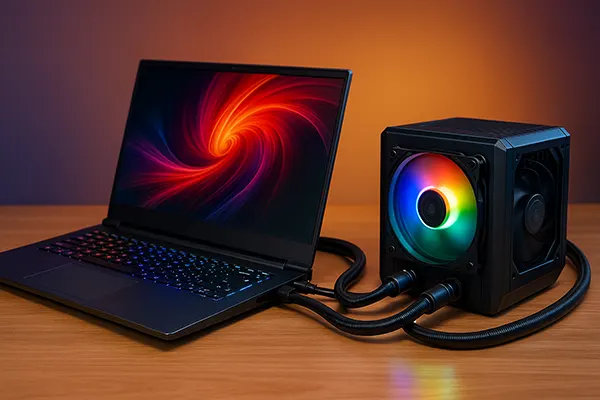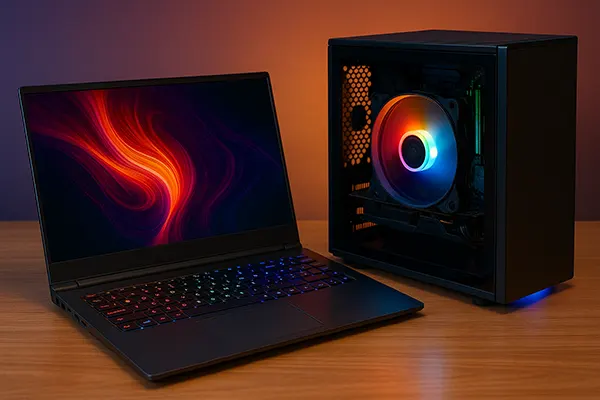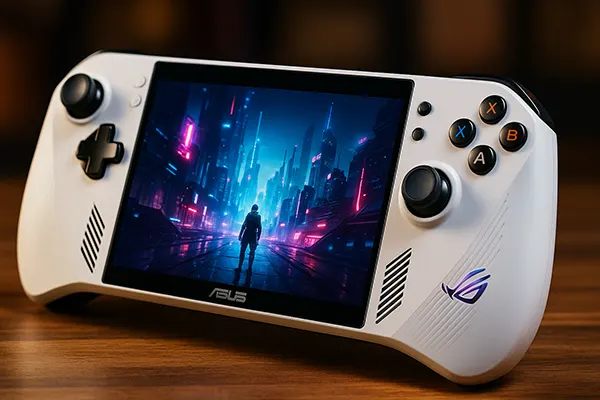
Liquid Cooling for Gaming Laptops: Innovations of 2025
Gaming laptops have long struggled with overheating, especially as modern titles push hardware to its limits. In 2025, external liquid cooling systems are reshaping how gamers handle thermal challenges. Manufacturers are introducing solutions aimed at maintaining performance without compromising portability. This article offers a detailed look at current innovations, how they perform in practice, and whether they truly benefit everyday users.
External Liquid Cooling in 2025: The State of Play
The idea of pairing a portable device like a laptop with a water-cooling system may seem contradictory, but modern external systems challenge this notion. Brands such as XMG have pioneered this approach with models like the Oasis, which connects via dedicated ports and delivers liquid cooling without opening the laptop chassis. The principle is to offload heat externally, improving thermal regulation without increasing the device’s footprint.
The XMG Oasis and similar devices work through quick-connect nozzles and integrated sensors. Once plugged in, coolant circulates through the external unit, drawing heat away from internal components via a closed-loop system. This design drastically reduces reliance on internal fans, leading to quieter operation and more stable thermal behaviour during intensive sessions.
Other brands are joining this trend. Lenovo and ASUS have started unveiling their own external solutions, incorporating refined ergonomics and improved fluid dynamics. These devices are not universal, however: they often require compatible laptop models with proprietary cooling connectors, making them more of a premium ecosystem rather than a plug-and-play upgrade.
Thermal Benchmarks and Real-World Impact
Independent tests conducted on 2025 gaming laptops using the XMG Oasis or similar systems show promising numbers. In high-performance tasks like 3D rendering or extended gaming, CPU temperatures dropped from an average of 90–95°C to around 70–75°C. GPU performance remained more consistent, with thermal throttling significantly reduced.
Even under synthetic stress tests such as Cinebench R24 or FurMark, liquid-cooled setups maintained frequency stability. Laptops equipped with AMD Ryzen 9 and Intel Core i9 processors sustained peak boost clocks longer than air-cooled counterparts. The system’s ability to keep both CPU and GPU under safe temperature thresholds is particularly notable for professional use cases like video editing and AI model training.
While the cooling gains are measurable, it’s crucial to understand that these systems don’t eliminate heat — they relocate it. Users must ensure adequate space and ventilation for the external unit. Additionally, proper handling and maintenance of the cooling fluid are necessary to avoid leaks and performance degradation over time.
Practicality and Use Cases for Home Gamers
For the average home gamer, adopting an external liquid cooling setup may feel like overkill. However, this solution starts to make sense when viewed as part of a semi-permanent desk setup. Laptops like the XMG Neo series, designed to act as desktop replacements, benefit most from these systems due to their high TDP components and limited chassis airflow.
Users prioritising noise reduction will find these cooling systems appealing. Liquid setups operate at lower decibel levels compared to full-speed fans, which often resemble turbine engines under load. In a shared space or home office, quieter performance is not just a luxury — it’s a practical necessity.
That said, the cost remains a barrier. External coolers often retail for £200–£300 and may only work with select devices. Maintenance, including periodic coolant refills and system checks, adds another layer of complexity. Thus, these solutions cater best to enthusiasts who demand uncompromised performance from their mobile workstations or gaming rigs.
Who Really Benefits?
Professionals using gaming laptops for heavy tasks like 3D design, VFX, or data simulation gain the most. These workloads create sustained heat, and any thermal headroom directly translates to faster processing and reduced wear on internal components.
Streamers running dual software pipelines — game engines and broadcasting tools — also benefit. External cooling keeps the system quieter for on-mic recording while reducing the likelihood of crashes due to heat. It also maintains consistent frame rates, avoiding dropped frames during encoding.
For casual gamers or students, air-cooled laptops remain sufficient. The trade-off in cost and mobility makes liquid cooling an investment with limited everyday return. However, it introduces an important shift in how mobile computing power can be leveraged at home without thermal constraints.

Market Trends and Future Outlook
By early 2025, liquid cooling for laptops has moved from niche accessory to strategic hardware trend. Manufacturers no longer view high-performance laptops and liquid cooling as mutually exclusive. Instead, we see integration through co-engineered ecosystems where laptops are sold alongside their cooling modules, ensuring compatibility and ease of setup.
There is a notable shift in design philosophy too. Unlike early versions that resembled lab equipment, the new generation of external coolers is more compact, aesthetically aligned with gaming peripherals, and easier to manage. Some models even feature RGB lighting, LCD telemetry, and smartphone integration for real-time monitoring.
Looking forward, we can expect wider adoption as standards evolve. USB4 and Thunderbolt 5 could simplify external connections, removing the need for proprietary cooling ports. If open standards are embraced, more brands and users may enter this space, eventually leading to modular, performance-tiered laptop ecosystems similar to desktop setups.
Environmental and Longevity Considerations
Aside from raw performance, liquid cooling contributes to sustainability by extending device lifespans. Lower average operating temperatures reduce thermal fatigue on key components like VRMs and SSDs. This means fewer hardware replacements and lower e-waste over time.
Moreover, energy efficiency improves slightly as the system doesn’t rely solely on power-hungry fans. While not dramatic, the cumulative impact over months of usage can translate into tangible savings on electricity, especially in regions with high energy costs or warmer climates.
Finally, user education is key. As more consumers explore liquid cooling, proper guidance on setup, maintenance, and troubleshooting must become standard. Manufacturers who invest in clear documentation and responsive support will lead in adoption and trust.





